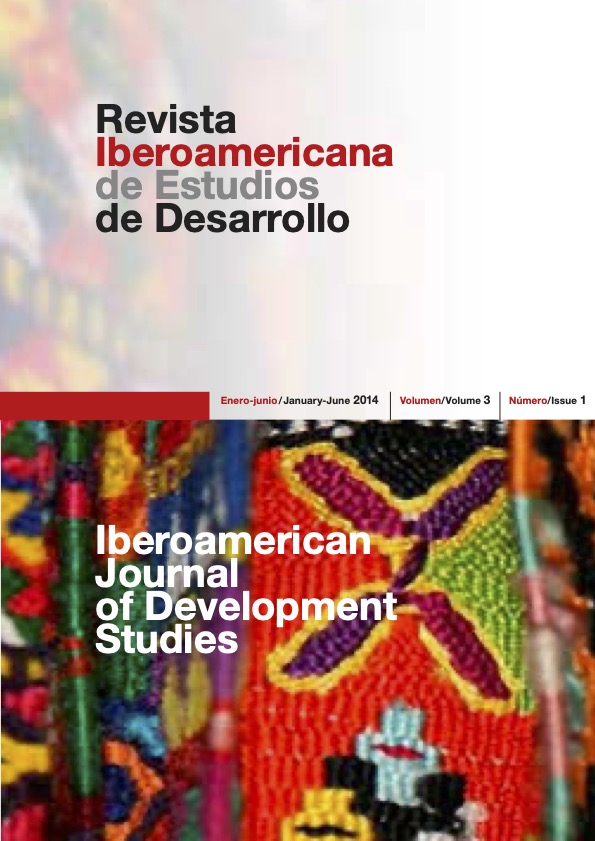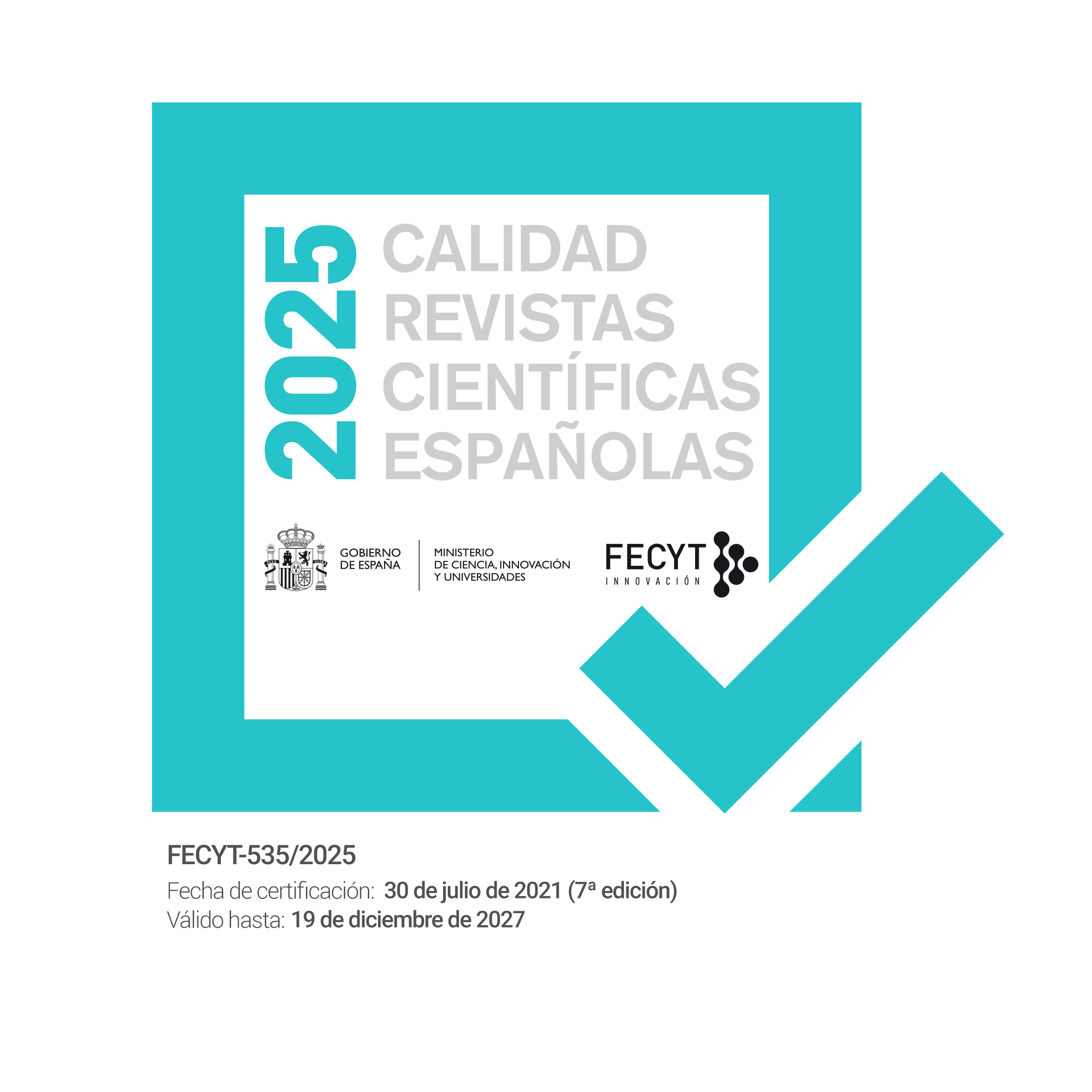The Favelas of Rio de Janeiro: A study of socio-spatial segregation and racial discrimination
DOI:
https://doi.org/10.26754/ojs_ried/ijds.87Keywords:
Racial discrimination, segregation, favela, Afro-Brazilians, power relations, Rio de JaneiroAbstract
Race relations in Brazil are characterized by the coexistence of miscegenation (interracial social contact) and racial discrimination. This paper examines to what extent Brazilian race relations are expressed in the urban space, how they inflect its physical configuration and influence the social processes that take place within it. In this sense, it states that as long as it is considered that the space is subjected to power relations it can be asserted that these dynamics are expressed in the configuration of Brazilian cities, particularly in Rio de Janeiro. Thus, the urban structure of Rio reflects certain level of interracial sociability in terms of residence and the social hyper-inequalities of Brazilian society. In addition, the study of the favelas shows how discourses about race and urban space are interconnected and reinforce racial discrimination.CITE AS:
Olavarria-Berenguer, L. (2014). The Favelas of Rio de Janeiro: A study of socio-spatial segregation and racial discrimination. Iberoamerican Journal of Development Studies, 3 (1): 104-134
Downloads
References
AMNESTY INTERNATIONAL (2011). Amnesty International Annual Report 2012 – Brazil. http://www.amnesty.org/en/region/brazil/report-2011, accessed 21 August 2012.
AMNESTY INTERNATIONAL (2012). Amnesty International Annual Report 2012 – Brazil. http://www.unhcr.org/refworld/docid/4fbe394c73.html, accessed 21 August 2012.
AMNESTY INTERNATIONAL (2013). Amnesty International Annual Report 2013 – Brazil.
http://www.amnesty.org/en/region/brazil/report-2013, accessed 12 November 2013.
ANDRANOVICH, G., BURBANK, M.J., HEYING, C.H. (2001).Olympic cities: lessons learned from Mega Events Politics. Journal of Urban Affairs, 23 (2): 113-131.
CALDEIRA, T.P.R. (2000). City of Walls: Crime, Segregation, and Citizenship in São Paulo. University of California Press, Berkley.
CAVALLIERI, F., VIAL, A.(2012). Favelas na cidade do Rio de Janeiro: o quadro populacional com base no Censo 2010. http://portalgeo.rio.rj.gov.br/estudoscariocas/download%5C3190_FavelasnacidadedoRiodeJaneiro_Censo_2010.PDF, accessed 9 August 2012.
CHALKLEY, B, ESSEX, S. (1999). Urban development through hosting international events: a history of the Olympic Games. Planning Perspectives, 14: 369- 394.
CHANDDHA, A., WILSON, W.J.(2008). Reconsidering the “Ghetto”. City & Community, 7(4): 384-388.
CLEARY, D. (1999). Race, nationalism and social theory in Brazil: rethinking Gilberto Freyre. WPTC-99-09. David Rockefeller Center for Latin American Studies Harvard University, Cambridge.
COHRE (Centre on housing rights and evictions) (2007). Fair play for housing rights.Mega-Events, Olympic Games and Housing Rights. Opportunities for the Olympic movement and others. [pdf], COHRE, Geneva http://tenant.net/alerts/mega-events/Report_Fair_Play_FINAL.pdf, . accessed 14 November 2013.
CORTES, M. (2007). Trabalho e Condiçoes de Vida nas Favelas Cariocas.
http://bibliotecadigital.fgv.br/dspace/bitstream/handle/10438/711/2253.pdf;jsessionid=7ED99900D458660BA2A70120964588D3?sequence=1, accessed 13 August 2012.
DA PIEDADE MORAIS, M. (2010). Condições de vida e moradia nos assentamentos precários brasileiros. Desafios do Desenvolvimiento, 63. http://desafios2.ipea.gov.br/003/00301009.jsp?ttCD_CHAVE=14768, accessed 10 July 2012.
DA SILVA, D. (1998). Facts of Blackness: Brazil is not Quite the United States …and Racial Politics in Brazil? Social Identities: Journal for the Study of Race, Nation and Culture, 4 (2): 201-234.
DE SOUZA E SILVA, J. (2010). As Unidades Policiais Pacificadoras e os novos desafios para as favelas cariocas.
http://www.observatoriodefavelas.org.br/userfiles/file/Aspectos%20humanos%20das%20favelas%20cariocas.pdf , accessed 9 August 2012.
DOS SANTOS, S.A.,(2006). Who Is Black in Brazil? A Timely or a False Question in Brazilian Race Relations in the Era of Affirmative Action? Latin American Perspectives, 33 (4):30-48.
ELIÉCER, J. (2010). Historia de los espacios, historia de los poderes: hacia una genealogía de la noción de espacio público. Tabula Rasa, 13: 93-109.
ESSEX, S., CHALKLEY, B. (1998). Olympic Games: catalyst of urban change. Leisure Studies, 17(3): 187-206.
FAIR, H. (2010). Una aproximación al pensamiento de Michael Foucault. Polis: investigación y análisis sociopolítico y psicosocial, 6(1):13-42.
FOUCAULT, M. (1979). Microfísica del poder. Las Ediciones de La Piqueta, Madrid.
FOUCAULT, M. (2002). Vigilar y castigar. Nacimiento de la prisión. Siglo XXI editores Argentina S.A, Buenos Aires.
FUNDAÇÃO GETÚLIO VARGAS (FGV) (2010). Desigualdade e Favelas cariocas: a Cidade Partida está se integrando?, http://www.cps.fgv.br/ibrecps/rio2010/RIO_FAVELAS_Relatorio_final_TEXTO_Neri.pdf, accessed 14 November 2013.
GOFFMAN, E. (2006). Estigma. La identidad deteriorada.: Amorrortu editores, Buenos Aires-Madrid.
GUIMARÄES, A.S.A. (1996). El mito del anti-racismo en Brasil. Nueva Sociedad, 144:32-45.
GUIMARÄES, A.S.A. (2002). Democracia racial: el ideal, el pacto y el mito. Estudios Sociológicos, XX (59):305-333.
HANCHARD, M. (2003). Acts of Misrecognition: Transnational Black Politics, Anti-imperialism and the Ethnocentrisms of Pierre Bourdieu and Loïc Wacquant. Theory, Culture & Society, 20(4):5-29.
IBGE,(2010). Censo 2010.
http://www.ibge.gov.br/cidadesat/topwindow.htm?1, accessed 27 August 2012.
IPP RIO (Instituto Pereira Passos- Rio de Janeiro) (2000a). Average monthly income in minimum salaries of head of household by neighborhood-2000. http://www.armazemdedados.rio.rj.gov.br/arquivos/1357_mapa%20rendimento%20m%C3%A9dio%20mensal%20em%20sal%C3%A1rios%20m%C3%ADnimos.PDF, accessed 17 August 2012.
IPP RIO (Instituto Pereira Passos- Rio de Janeiro) (2000b). Proportion of literate people aged 15 or more by neighborhood-2000. http://www.armazemdedados.rio.rj.gov.br/arquivos/1368_propor%C3%A7%C3%A3o%20de%20pessoas%20alfabetizadas%20com%2015%20anos%20ou%20mais%20de%20idade,%20por%20bairros%20-%202000.JPG, accessed 17 August 2012.
IPP RIO (Instituto Pereira Passos- Rio de Janeiro) (2000c). Human development index/general by administrative region-2000 http://www.armazemdedados.rio.rj.gov.br/arquivos/1374_%C3%ADndice%20de%20desenvolvimento%20humano%20geral,%20por%20regi%C3%B5es%20administrativas%20-%202000.JPG , accessed 17 August 2012.
IPP RIO (Instituto Pereira Passos- Rio de Janeiro) (2000d). Proportion of whites in relation to the total population by administrative region-2000. http://www.armazemdedados.rio.rj.gov.br/arquivos/1343_propor%C3%A7%C3%A3o%20de%20pessoas%20da%20cor%20ra%C3%A7a%20branca%20em%20rela%C3%A7%C3%A3o%20ao%20total%20-%202000.JPG, accessed 17 August 2012.
IPP RIO (Instituto Pereira Passos- Rio de Janeiro) (2000e). Proportion of blacks in relation to the total population by administrative region-2000. http://www.armazemdedados.rio.rj.gov.br/arquivos/1345_propor%C3%A7%C3%A3o%20de%20pessoas%20da%20cor%20ra%C3%A7a%20preta%20em%20rela%C3%A7%C3%A3o%20ao%20total%20da%20popula%C3%A7%C3%A3o%20-%202000.JPG , accessed 17 August 2012.
IPP RIO (Instituto Pereira Passos- Rio de Janeiro) (2000f). Proportion of pardos (browns) in relation to the total population by administrative region-2000. http://www.armazemdedados.rio.rj.gov.br/arquivos/1344_propor%C3%A7%C3%A3o%20de%20pessoas%20da%20cor%20ra%C3%A7a%20parda%20em%20rela%C3%A7%C3%A3o%20ao%20total%20da%20popula%C3%A7%C3%A3o%20-%202000.JPG, accessed 17 August 2012.
IPP RIO (Instituto Pereira Passos- Rio de Janeiro) (2000g). Proportion of favelas´s residents in relation with the total population by administrative region-2000. http://www.armazemdedados.rio.rj.gov.br/arquivos/1381_propor%C3%A7%C3%A3o%20da%20popula%C3%A7%C3%A3o%20moradora%20em%20setor%20subnormal%20no%20total%20da%20popula%C3%A7%C3%A3o%20-%202000.JPG , accessed 17 August 2012.
KOONINGS, K., VEENSTRA, S. (2007). Exclusión social, actores armados y violencia urbana en Río de Janeiro. Foro Internacional [e-journal] XLVII (3):616-636. Available through: Red de revistas científicas de América Latina y el Caribe, España y Portugal (Redalyc), accessed 12 August 2012.
LEITE, M.P (2008). Pobreza y exclusión en las favelas de Río de Janeiro. In: A., Ziccardi, 1980. Procesos de urbanización de la pobreza y nuevas formas de exclusión social. Los retos de las políticas sociales de las ciudades latinoamericanas del siglo XXI. Hombre Editores, Clacso-Crop: 213-247.
http://biblioteca.clacso.edu.ar/ar/libros/clacso/crop/ziccardi/ziccardi.pdf, accessed 12 August 2012.
MARQUEZ, R. (2005). Desorden, barbarie y peligro. La construcción de la marginalidad del favelado en Brasil. Gazeta de Antropología, 21(13):1-11.
MUTEBA RAHIER, J. (2003). Mestizaje, Mulataje, Mestigagem in Latin American Ideologies of National Identities. The Journal of Latin American Anthropology, 8(l): 40-51.
Nogueira, M., Martinuzzi, M., Machado da Silveira, A.C. and Padilha, I. (2012). Enquadramento Jornalístico: enxergando a favela pelos olhos da mídia. In: Universidade Federal de Santa Maria, XIII Congresso de Ciências da Comunicação. Região Sul , Chapecó from 31May to 02 June 2012. Intercom-Sociedade Brasileira de Estudos Interdisciplinares da Comunicação.
O GLOBO (2011a). Pacificação abre caminho para formalização nas favelas do Rio. O Globo. [online] 12 July.
http://g1.globo.com/economia/pme/noticia/2011/07/pacificacao-abre-caminho-para-formalizacao-nas-favelas-do-rio.html, accessed 27 August 2012.
.
O GLOBO (2011b). Prefeitura estima UPP Social em R$ 1 bilhão, que será aplicado até 2012. O Globo. [online] 27 July.
http://oglobo.globo.com/rio/prefeitura-estima-upp-social-em-1-bilhao-que-sera-aplicado-ate-2012-2713562, accessed 27 August 2012.
O GLOBO (2011c). As açoes urgentes da agenda social Rocinha. O Globo. [online] 20 November. http://www.clipnaweb.com.br/prefeitura2/consulta/materia.asp?mat=206538&cliente=prefeitura2&, accessed 27 August 2012.
O GLOBO (2012a). Mais um teleférico que surge. O Globo. [online] 11 July.
http://www.clipnaweb.com.br/prefeitura2/consulta/materia.asp?mat=230803&cliente=prefeitura2 , accessed 27 August 2012.
O GLOBO, (2012b). Gente nova no comercio carioca. O Globo. [online] 22 August. http://www.clipnaweb.com.br/prefeitura2/consulta/materia.asp?mat=234997, accessed 27 August 2012.
OLIVEIRA, N.D.O. (1996). Favelas and Ghettos: Race and Class in Rio de Janeiro and New York City. Latin American Perspectives, 23 (71): 71-89.
OLIVEIRA, N.D.S. (1997). Race, Class and the Political Mobilization of the Poor: Ghettos in New York and Favelas in Rio de Janeiro. Comparative Urban Studies Occasional Paper Series, 8:1-24.
http://www.wilsoncenter.org/sites/default/files/ACF196.pdf, accessed 26 June 2012.
OLIVEIRA, N.D.S.(2001). The location of the poor in Rio de Janeiro: The Influence of Race on Favela. [online] http://www.brasa.org/_sitemason/files/erZAKA/Oliveira%20Ney%20dos%20Santos.pdf, accessed 26 June 2012.
PERLMAN, J. (2005). The myth of marginality revisited. The case of favelas in Rio de Janeiro, 1969-2003. http://abahlali.org/files/perlman.pdf , accessed 24 June 2012.
PNUD (2005). Relatório de Desenvolvimento Humano. Racismo, pobreza e violencia. [pdf], PNUD, Brasília.
http://www.pnud.org.br/HDR/Relatorios-Desenvolvimento-Humano-Brasil.aspx?indiceAccordion=2&li=li_RDHBrasil, accessed 29 June 2012.
POVO DE RIO (2012). Escolas em áreas violentas tem desempnho abaixo da média no Ideb. Povo de Rio. [online] 18 August. http: http://www.clipnaweb.com.br/prefeitura2/consulta/materia.asp?mat=234596, accessed 27 August 2012.
RIBEIRO, L.C.Q., TELLES, E. (2000). Rio de Janeiro: Emerging Dualization in a Historically Unequal City. In: Marcuse, P., and Van Kempen, R., 2000. Globalizing cities. A new spatial order? Blackwell Publishing: 78-94. [online] http://wxy.seu.edu.cn/humanities/sociology/htmledit/uploadfile/system/20110130/20110130111346711.pdf, accessed 26 June 2012.
RIBEIRO, L.C.Q. (2007). Metrópolis brasileñas: ¿cómo gobernar la urbs sin civitas? Nueva Sociedad, 212: 97-111.
RIO COMO VAMOS (2011). Pesquisa de percepção 2011. [online] Rio Como Vamos. http://www.riocomovamos.org.br/portal/arquivos/110451_percepcao2011_verssaofinal.pdf, accessed 13 August 2012.
SALDAÑA PEREIRA, R., AND RAMBLA, X (2007). Desigualdad racial en Brasil: la realidad desmiente el mito. Revista Mexicana de Sociología, 69(3):401-426.
SEN, A. (2000). Development as Freedom. Alfred A. Knopf, New York.
SHERIFF, R.E. (2003). Embracing Race: Deconstructing Mestigagem in Rio de Janeiro. The Journal of Latin American Anthropology, 8(1):86-1.
SHORT, J.R. (2004). Going for Gold: Globalizing the Olympics, Localizing the Games. In J.R. Short, 2004. Global Metropolitan: Globalizing Cities in a Capitalist World, Routledge, London: 86-108.
SIMÕES, P. (2006). Introduction. Latin American Perspectives, 33(4): 5-12.
SMITH, M. (2008). When the Games Come to Town: Host Cities and the Local Impacts of the Olympics. A report on the impacts of the Olympic Games and Paralympics on host cities. [pdf], London East Research Institute Working Papers. http://www.uel.ac.uk/londoneast/research/documents/WHENTHEGAMESCOMETOTOWNWORKINGPAPER.pdf, accessed 14 November 2013.
TELLES, E. (1992). Residential Segregation by Skin Color in Brazil. American Sociological Review, 57 (2):186-197.
TELLES, E. (1995). Race, Class and Space in Brazilian Cities. International Journal of Urban and Regional Research, 19 (3):395-406.
TELLES, E. (2004). Race in another America. The significance of skin color in Brazil. Princeton University Press, Princeton.
UPP (2013). History. [online] http://www.upprj.com/index.php/historico_us accessed 14 November 2013.
UPP SOCIAL (2012). UPP Social. [online] http://www.uppsocial.org/, accessed 9 August 2012.
VARGAS, J.H.C. (2006). When a Favela Dared to Become a Gated Condominium. The Politics of Race and Urban Space in Rio de Janeiro. Latin American Perspectives, 33(4):49-81.
VEJA (2010). UPPs passam a ser tratadas como ‘atração turística’. Veja, [online] 22 August. http://veja.abril.com.br/noticia/brasil/upps-passam-a-ser-tratadas-como-%E2%80%98atracao-turistica%E2%80%99, accessed 27 August 2012.
VIEIRA DA CUNHA, N. (2012). Vivienda popular y seguridad pública: el proceso de “pacificación” en las favelas de Río de Janeiro. [online] Latin American Council of Social Science (CLACSO). http://bibliotecavirtual.clacso.org.ar/clacso/gt/20120409125345/gthi2-7.pdf , accessed 9 August 2012.
WACQUANT, L. (2008). The Militarization of Urban Marginality: Lessons from the Brazilian Metropolis. International Political Sociology, 2:56–74.
WADE, P. (1997). Race and Ethnicity in Latin America. Pluto Press, London.
WADE, P. (2004). Images of Latin American mestizaje and the politics of comparison. Bulletin of Latin American Research, 23(3):355–366
Downloads
Published
Issue
Section
License
Copyright (c) 2014 Leticia Olavarria-Berenguer

This work is licensed under a Creative Commons Attribution-NonCommercial-NoDerivatives 4.0 International License.








